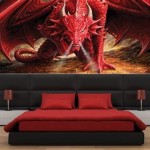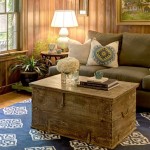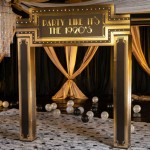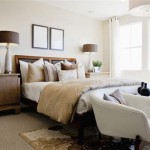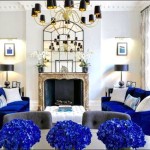```html
How To Make Your Own Decor Signs In Minecraft
Minecraft, at its core, is a game about creativity and building. While the game offers a plethora of pre-designed blocks and items, players often seek ways to personalize their creations further. Decor signs are a fantastic method to add unique visual elements and personalized messaging to Minecraft builds. Creating custom decor signs involves leveraging in-game mechanics in combination with readily accessible resources.
Understanding the Fundamentals of Sign Customization
The standard Minecraft sign is made from wood and sticks, allowing for basic text input. However, these signs are limited in terms of customization options. To create truly unique decor signs, players must exploit the game's text formatting codes, item frames, and map art functionalities, as well as understand the limitations related to manipulating item textures for a greater visual impact.
Text formatting codes, accessible through the section symbol (§), are a key aspect of customizing signs. This symbol, often found by copying from an external source (web browser, notepad) and pasting into the sign interface in-game, allows players to change the color and formatting of the text. Numerical codes (e.g., §1 for dark blue, §a for light green) change the color, while letter codes (e.g., §l for bold, §o for italic) alter the text’s styling. Combining these codes offers a vast range of text personalization options.
The use of item frames provides a physical platform for displaying items, allowing for the creation of more elaborate sign displays. An item frame placed on a wall can house various items, from simple blocks to complex maps. By manipulating the item displayed within the frame, players can create custom images and patterns that far exceed the limitations of text-based signs.
Map art is a more advanced technique that involves creating large-scale pixel art within the boundaries of a Minecraft map. These maps can then be placed in item frames to create large, detailed signs. This technique requires significant planning and resource investment, as it involves carefully placing blocks in the world to create the desired image. The map is then rendered, and subsequently placed in an item frame for display.
However, limitations do exist. The game's engine limits the amount and type of custom data that can be displayed on a sign or within an item frame. These limitations include restricted character counts on standard signs, potential color palette restrictions when generating map art, and the finite resolution of Minecraft maps. Players must be aware of these restrictions when planning their custom decor signs.
Leveraging Item Frames for Visual Designs
Item frames provide a versatile platform for crafting more intricate decor signs. Rather than being limited to text, item frames allow players to display any item in the game, opening up possibilities for visual design. This method involves strategically choosing items and arranging them within the frame to create desired patterns or images.
Simple, readily available items like colored wool, terracotta, and stained glass can be used to create pixelated images within the confines of an item frame. By strategically placing these items in rows and columns, players can recreate logos, icons, or simple abstract designs. The advantage of this approach is its relative simplicity and accessibility, as the resources required are typically easy to obtain.
More complex designs can be achieved by utilizing custom-textured items or banner patterns. Custom-textured items can be created using resource packs, which allow players to modify the appearance of existing items. By creating custom textures for blocks, players can effectively design their own "pixels" to be displayed within item frames. This method offers a significantly higher degree of customization but requires more technical knowledge and the use of external tools.
Banner patterns can also be employed to create unique designs within item frames. Banners can be customized with a variety of patterns, including stripes, gradients, and symbols. When placed in an item frame, the banner pattern becomes a miniature design element. By combining different banner patterns and strategically arranging banners within multiple item frames, players can create complex and visually appealing sign displays.
When using item frames, consider the orientation of the item within the frame. Players can rotate items within the frame, and this rotation can be used to create different visual effects. For example, a single piece of colored wool can be rotated to create different shades or patterns, depending on the lighting conditions and the viewing angle.
Creating Advanced Signs with Map Art Techniques
For the most detailed and visually impressive decor signs, map art is the technique of choice. This method involves creating pixel art on a large scale within the Minecraft world and then rendering it onto a map, which is subsequently displayed in an item frame. Map art is the most time-consuming and resource-intensive method, but it offers the highest level of customization and visual fidelity.
The first step in creating map art is to plan the design. Players must consider the map's resolution (128x128 pixels) and the available color palette. Detailed plans are essential for ensuring that the final design is accurate and visually appealing. Planning tools, such as grid paper or digital image editors, can be used to create a pixel-perfect blueprint of the desired image.
Once the design is finalized, the next step is to build the artwork in the Minecraft world. This involves carefully placing blocks to match the pixel art blueprint. The choice of blocks is crucial, as different blocks have different colors and textures. Players should experiment with different block combinations to achieve the desired visual effect. The construction process can be accelerated by using tools such as WorldEdit, a third-party mod that allows for bulk block placement and manipulation.
After the artwork is complete, it must be rendered onto a map. This is done by crafting an empty map and then holding it within the boundaries of the artwork. The map will automatically render the artwork, creating a visual representation of the design. The map can then be placed in an item frame for display.
Creating map art requires a significant amount of space and resources. Players should choose a flat, open area for their artwork. The area should be large enough to accommodate the entire design, with ample space for maneuvering and block placement. Players should also gather a large supply of the required blocks, as map art projects can consume vast quantities of resources over time.
Further enhancing map art projects is possible through clever lighting and elevation changes. The use of strategically placed light sources, such as glowstone or lanterns, can add depth and dimension to the artwork. Elevation changes, such as hills or valleys, can also be used to create interesting visual effects. Experimentation with these techniques can significantly enhance the quality and visual impact of map art signs.
```
Make Your Own Diy Minecraft Decor Sign Pixel Mini Block Kits Nederland

How To Make Signs In Minecraft Materials Crafting Guide Uses

Make Your Own Diy Minecraft Decor Sign Pixel Mini Block Kits Nederland

How To Make Signs In Minecraft Materials Crafting Guide Uses

Make Your Own Diy Minecraft Decor Sign Pixel Mini Block Kits In 2025 Birthday Party Decorations

Minecraft Hanging Signs How To Craft Use Dexerto

Hanging Sign Minecraft Feedback

Minecraft Hanging Signs How To Craft Use Dexerto

Sign Minecraft Wiki

Sign Minecraft Wiki


